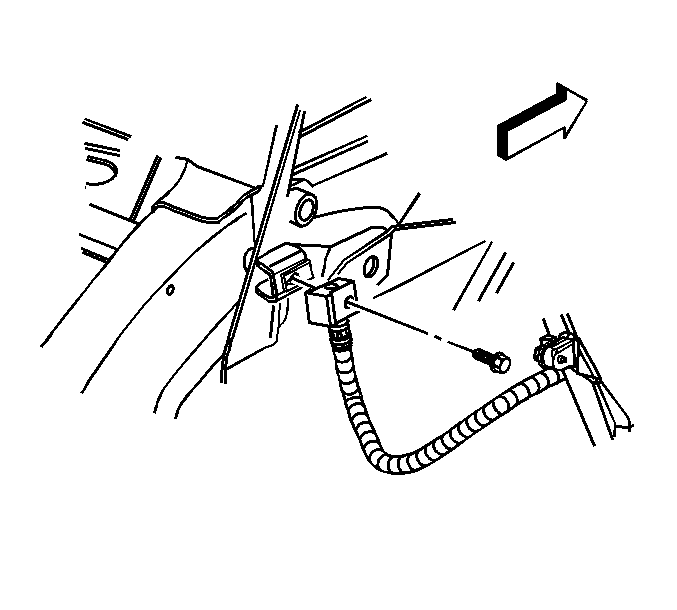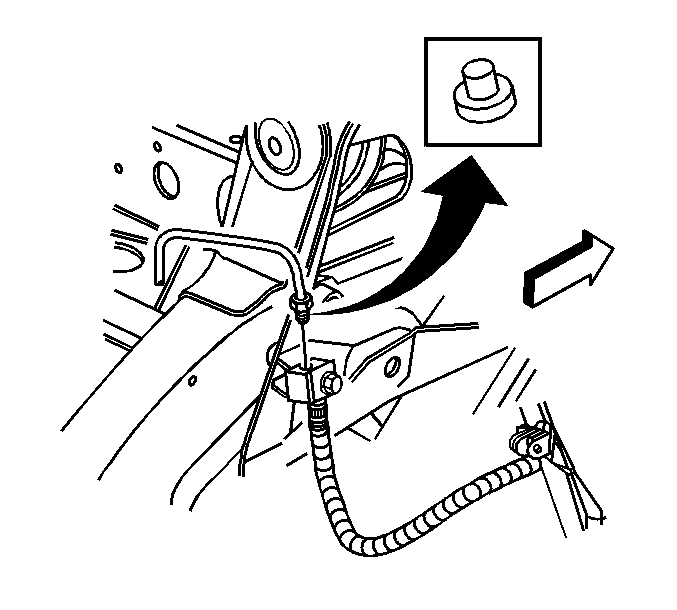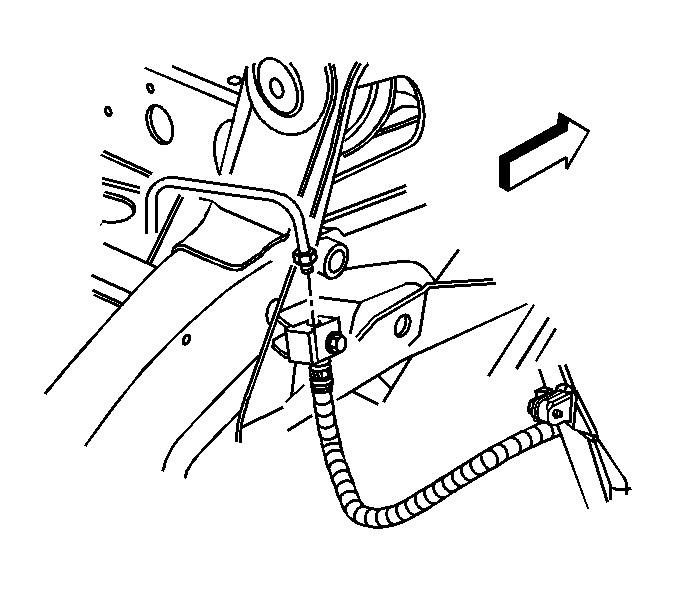Caution: Refer to Brake Fluid Irritant Caution in the Preface section.
Notice: Refer to Brake Fluid Effects on Paint and Electrical Components Notice in the Preface section.
Removal Procedure
- Remove the brake hose retaining bolt from the frame.
- Install a rubber cap or plug on the brake pipe fitting.
- Remove the brake hose bolt from the brake caliper assembly.
- Remove the brake hose from the vehicle.
- Remove and discard the copper gaskets.


Important: Install a rubber cap or plug the exposed brake pipe fitting ends will prevent brake fluid loss and contamination.

Important: The metal gaskets may be stuck to either the brake caliper or the brake hose end. Ensure that these gaskets are removed from the brake hose end and the brake caliper.
Installation Procedure
- Install the NEW copper gaskets to the brake hose and bolt.
- Install the brake hose bolt to the brake caliper.
- Install the brake hose to brake caliper.
- Install the brake hose retaining bolt to the frame.
- Remove the rubber cap or plug from the brake pipe fitting.
- Install the brake pipe to the brake hose.
- Fill the brake master cylinder reservoir. Refer to Master Cylinder Reservoir Filling .
- Bleed the hydraulic brake system. Refer to Hydraulic Brake System Bleeding .
- Install the front tires and wheels assembly. Refer Tire and Wheel Removal and Installation to in Tires and Wheels.
- Lower the vehicle. Refer to Lifting and Jacking the Vehicle in General Information.

Important: DO NOT reuse the old copper gaskets. Use only NEW copper gaskets.
Notice: Refer to Fastener Notice in the Preface section.
Tighten
Tighten the brake hose bolt to 44 N·m (33 lb ft).

Tighten
Tighten the brake hose bolt to 20 N·m (18 lb ft).


Tighten
Tighten the brake pipe fitting to 20 N·m (18 lb ft).

